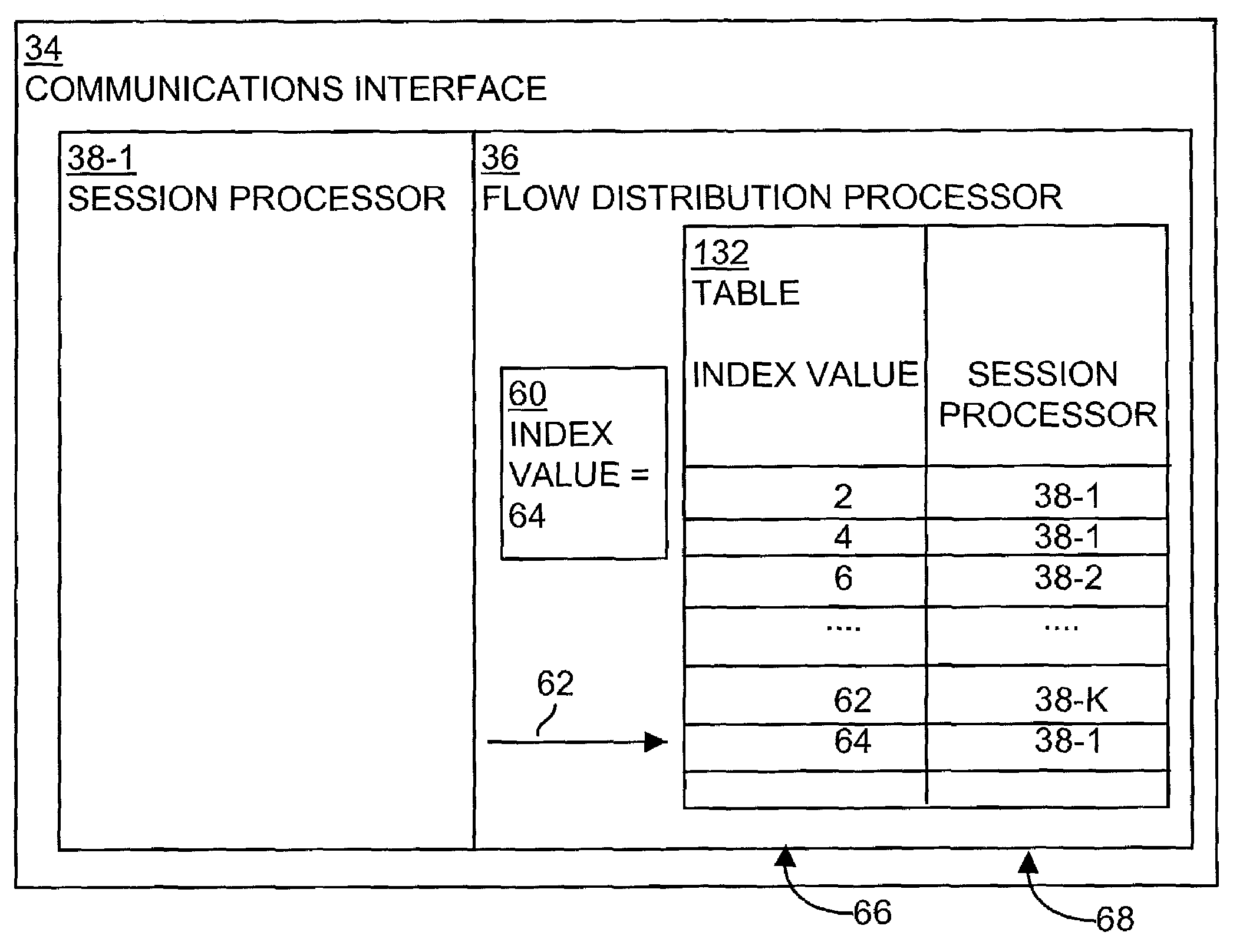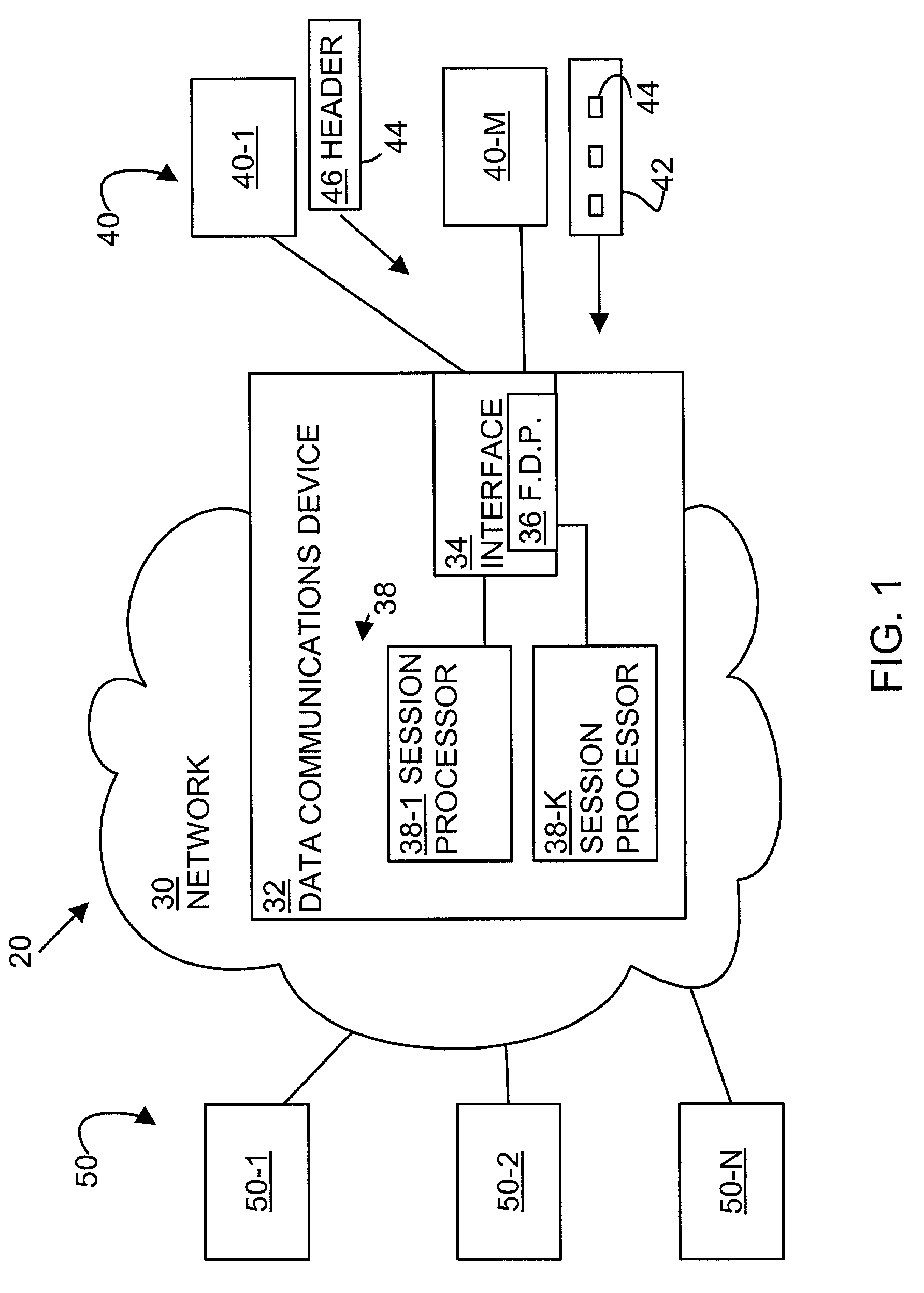Methods and apparatus for directing packets among a group of processors
a technology of processors and packets, applied in the direction of digital transmission, data switching networks, instruments, etc., can solve the problems of increasing the cost of the processor, the speed or rate at which the packets are processed and routed by the communications device, and the performance of the processor can degrade, so as to increase the performance characteristics of the processor, the processor is faster, and the memory is more.
- Summary
- Abstract
- Description
- Claims
- Application Information
AI Technical Summary
Benefits of technology
Problems solved by technology
Method used
Image
Examples
Embodiment Construction
[0026]The present invention is directed to techniques for directing packets received by a flow control processor located within an input / output (I / O) communication interface of a data communications device. The flow control processor can direct packets to a forwarding entity or session processor, chosen from a plurality of session processors, for further processing or routing. The session processors have the same ability to make decisions relating to the processing and routing of the packet and can have per second packet processing rates that are different from the flow control processor that received the packet (i.e., the processor located on the I / O communication interface of the data communications device at which the packet arrived). To allocate the packets to the session processors for further processing, the flow control processor processes information located within the header component of the received packet. The processor can compare processed header information to a rankin...
PUM
 Login to View More
Login to View More Abstract
Description
Claims
Application Information
 Login to View More
Login to View More - R&D
- Intellectual Property
- Life Sciences
- Materials
- Tech Scout
- Unparalleled Data Quality
- Higher Quality Content
- 60% Fewer Hallucinations
Browse by: Latest US Patents, China's latest patents, Technical Efficacy Thesaurus, Application Domain, Technology Topic, Popular Technical Reports.
© 2025 PatSnap. All rights reserved.Legal|Privacy policy|Modern Slavery Act Transparency Statement|Sitemap|About US| Contact US: help@patsnap.com



